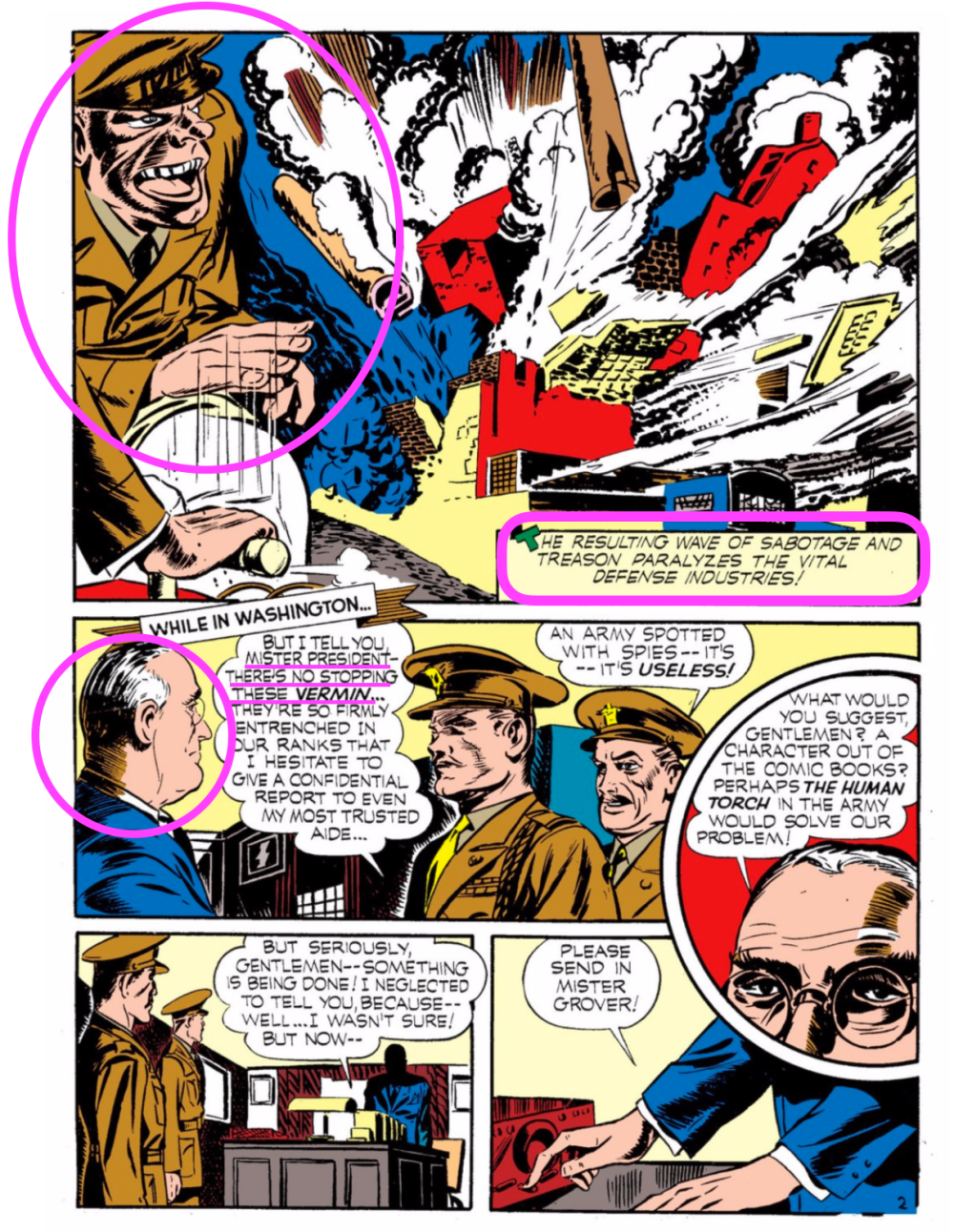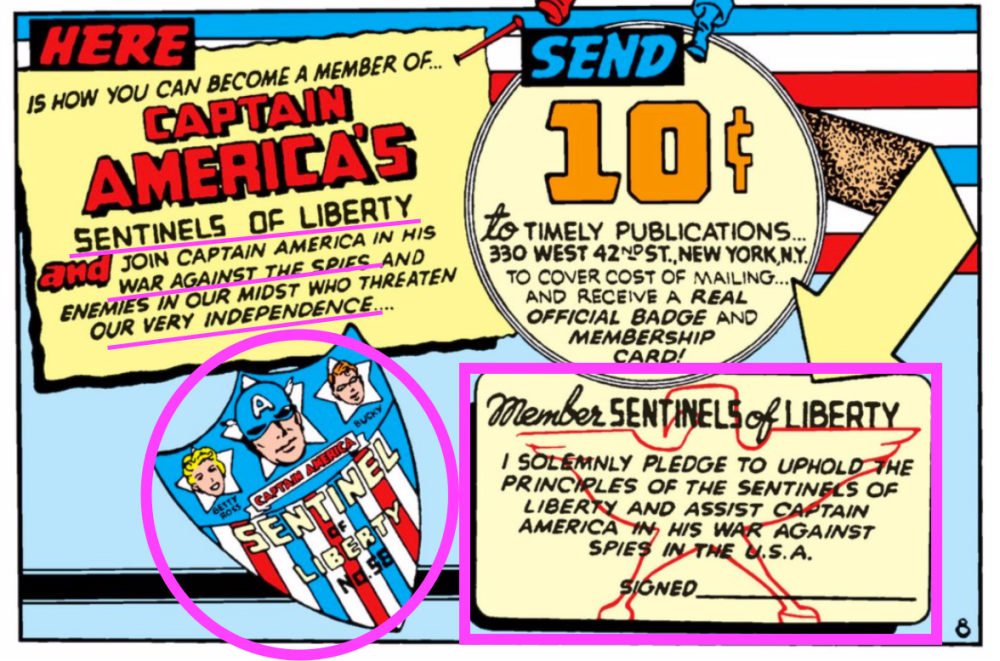
Captain America has become an iconic hero for comic book readers–standing side-by-side the likes of Spiderman, Superman, Thor, Black Widow, Iron Man, and many others. But Captain America isn’t simply a patriotic remix of the same hero trope… he represents a time period and a way of thinking that reads more like a history snapshot than an animated fairytale.
Consider the first introduction we have to the hero and the world that so directly surrounds him. Within one page the reader is introduced to four major concepts: (1) patriotism as a heroic identifier (2) the presence of politics in the action (3) the direct juxtaposition of Captain America, our hero, and Hitler, the villain, and finally (4) Nazi forces as direct threats to the reader.
Let’s take these one at a time. (1) Patriotism is a clear identifier of the hero in this case. The hero, sidekick, and even comic book title are star spangled to the highest power. This thematic representation encourages readers to not simply root for the hero, but for the country at large. The first page’s representation of army recruitment generalizes the fight to the entire country–encompassing the readers.
(2) The patriotism continues with the clear presentation of the Capitol building and an Uncle Sam poster, indicating that the heroism does not only come from the fighters, but also from the politicians. This point is further emphasized with the presentation of FDR and his advisors–shown below. Washington backs Captain America in his fight and as such the reader must appreciate the political cause that accompanies the hero’s journey.

(3) On the first page that Captain America is introduced, so is the weighty presence of Hitler. By introducing the “war-mongers of Europe” and “the Fuehrer” within the first few moments of the comic, the writers acknowledge this force as one comparable to Captain America in importance. This is who our hero will take on. This will drive the story. The two are juxtaposed to some extent on the first page (see arrow.) Additionally, Nazis are more aggressively depicted in the above panel. Referred to as “vermin,” the spies threatening the nation drive the plot. “The resulting wave of sabotage and treason paralyzes the vital defense industries.” This quote drives the plot and brings Captain America to the forefront. Without Hitler and his henchmen, Captain America wouldn’t exist to fight them.
(4) Again, the Nazi forces are labeled generally–not just Hitler–as a massive concern, directly threatening America and the comic readers. The reference to the “dreaded fifth column” directly nods to the common propaganda advertisements of the time. This group would allegedly overturn the country from within–threatening the readers that so vehemently support Captain America. The Nazis aren’t simply Captain America’s villain–they are our villain, to fight as a country.

Later in the section, this small advertisement seems to again point out the threat to the reader and the call to support Captain America. You aren’t simply rooting for a comic book character, you’re fighting the “war against the spies” and enemies “who threaten our very independence.” This last advertisement plays more as a piece of propaganda than a fan club.
In summary, Captain America isn’t simply a character to add to our list of favorite heroic depictions. He stands for a time and a way of thinking that played out in the real world–through not sometimes biased and not so heroic eyes.